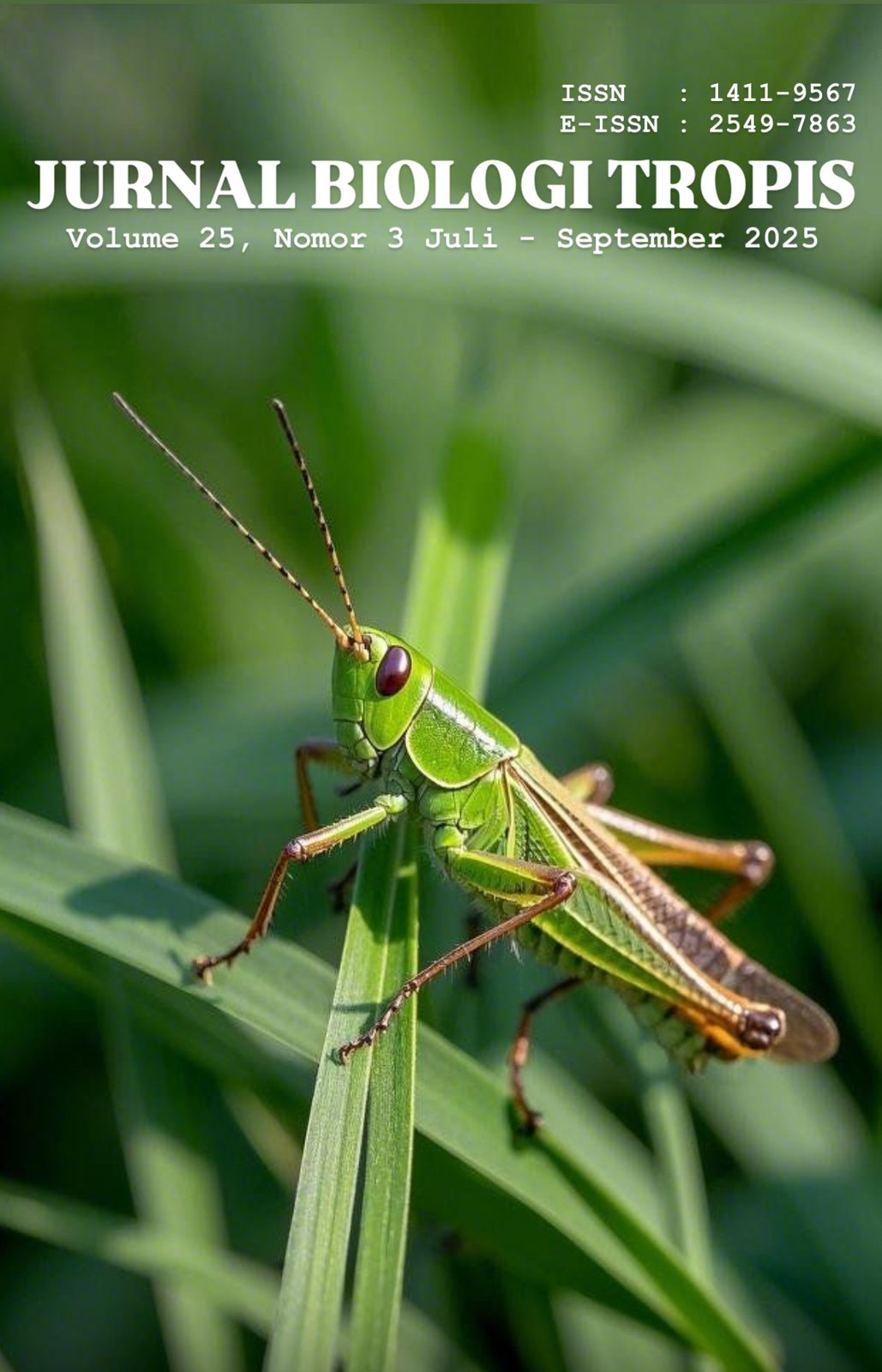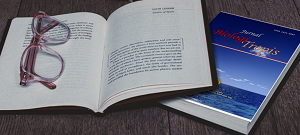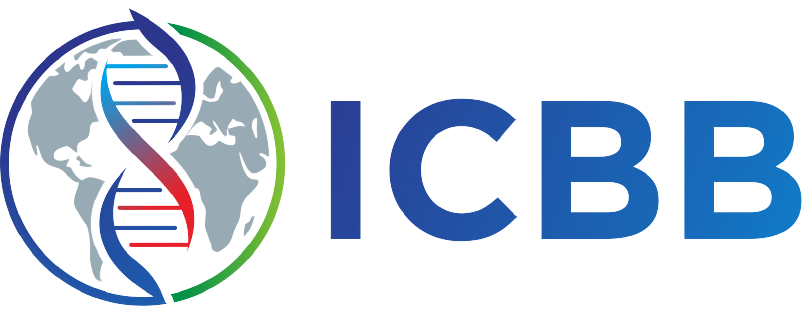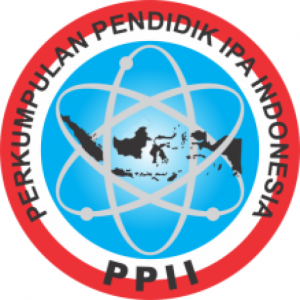The Effect of Addition Mushrooms Baglog Waste to Growth of Earthworm (Lumbricus rubellus) Populations
Authors
Maria Zulhaida , Karnan Karnan , Moh. Liwa IlhamdiDOI:
10.29303/jbt.v25i3.9629Published:
2025-07-15Issue:
Vol. 25 No. 3 (2025): Juli-SeptemberKeywords:
Earthworm (Lumbricus rubellus), mushroom baglog waste, population.Articles
Downloads
How to Cite
Downloads
Metrics
Abstract
The utilization of organic waste as a cultivation medium is a crucial step towards promoting sustainable agriculture and mitigating environmental impact. This study aims to evaluate the effect of adding mushroom baglog waste on the population growth of earthworms (Lumbricus rubellus), serving as supporting material in invertebrate zoology. This quantitative research, employing a true experimental method (True Experimental Research), was conducted for 60 days in the researcher's yard at Kebon Kopi Complex, Pejeruk Village, Ampenan District, Mataram City. The research design utilized a completely randomized design with five treatments and seven replications. The applied treatments included P0 (0% mushroom baglog waste), P1 (25% waste), P2 (50% waste), P3 (75% waste), and P4 (100% mushroom baglog waste). The observed parameters were the number and weight of earthworms. Research data were analyzed using the ANOVA test and the Least Significant Difference (LSD) test. The analysis results indicated that the addition of mushroom baglog waste significantly affected the earthworm population (P<0.05), suggesting that different proportions of mushroom baglog waste can increase both the number and weight of earthworms.
References
Akasiska, R., Riyo, S., Siswadi (2014). Pengaruh Konsentrasi Nutrisi Dan Media Tanam Terhadap Pertmubuhan Dan Hasil Sawi Pakcoy (Brassica parachinensis) sitem hidroponik vertkultur, Inovasi Pertanian, 13(2) 46-62. DOI: https://doi.org/10.33005/inp.v13i2.158
Al-Snafi, A. E. (2018). The pharmacological importance of earthworms (Lumbricus terrestris)—A review. IOSR Journal of Pharmacy, 8(7), 54-61. DOI: DOIhttps://doi.org/10.9790/3013-0807035461
Astuti, A. N., & Kurniawan, A. (2022). Pengaruh limbah baglog jamur tiram terhadap pertumbuhan cacing tanah Lumbricus rubellus. Jurnal Agrinika: Jurnal Agroteknologi dan Hasil Pertanian, 6(1), 8-15. DOI: https://doi.org/10.30606/agr.v6i1.1350
A'yun, Q., Subandiono, D., & Masyhud, M. (2021). Komposisi media terbaik dari limbah organik untuk pertumbuhan biomassa cacing tanah Lumbricus rubellus. Jurnal Ilmu dan Teknologi Pertanian Agrotek Tropika, 9(1), 162-171. DOI: https://doi.org/10.23960/jat.v9i1.4258
Bhandari, N., Shrestha, S., & Subedi, M. (2020). Vermicomposting of food waste using Eisenia fetida and Lumbricus rubellus. Journal of Soil Science and Plant Nutrition, 20(3), 1083-1092. DOI: https://doi.org/10.1007/s42729-020-00224-x
Brata, B. (2009). Cacing Tanah: Factor Mempengaruhi Pertumbuhan dan Perkembangbiakan. IPB Press. Bogor. ISBN: 978-979-493-200-2
Damayanti, E., Purnomo, M., & Rosyidi, A. I. (2020). Pemanfaatan limbah ampas tahu sebagai media budidaya cacing tanah Lumbricus rubellus. Jurnal Ilmu Peternakan, 28(3), 183-189. DOI: https://doi.org/10.21776/ub.jipt.2020.028.03.7
Dwiputranto, I. (2013). Pemanfaatan limbah media jamur tiram sebagai substrat untuk pertumbuhan cacing tanah jenis Lumbricus rubellus. Jurnal Ilmu Hayati dan Lingkungan, 18(2), 52-58. DOI: https://doi.org/10.20886/jilh.2013.18.2.52-58
Ernawati, A., Susanti, I. N., & Setyaningrum, E. T. (2019). Kadar protein cacing tanah Lumbricus rubellus sebagai bahan pakan ikan. Jurnal Perikanan dan Kelautan, 9(1), 54-61. DOI: https://doi.org/10.31258/jpk.9.1.54-61
Ernawati, N. M., Arthana, I. W., Kartika, G. R. A., Julyantoro, P. G. S., & Dewi A. P. W. K. (2019). Praktik Cara Budidaya Cacing Lumbricus Rubellus Dalam Menunjang Budidaya Ikan Lele di Desa Keramas Kabupaten Gianyar. Buletin Udayana Mengabdi.18(3). DOI: https://doi.org/10.24843/BUM.2019.v18.i03.p05
Fatmawati, F., & Setyaningsih, D. (2021). Peran cacing tanah dalam memperbaiki sifat fisik dan kimia tanah di lahan bekas tambang. Jurnal Penelitian dan Pengembangan Pertanian, 40(2), 123-132. DOI: https://doi.org/10.21082/jpp.v40n2.2021.p123-132
Ghaffoor, A., M.S.Jilani, G.Khalig, dan K.Waseem. (2003). Effect of different NPK levels on the growth and yield of Onion varieties. Asian J.of Plant Science. 157:227-234. DOI: https://doi.org/10.3923/ajps.2003.227.234
Handayani, D., & Prasetiyo, H. (2018). Pemanfaatan limbah pertanian sebagai media pertumbuhan cacing tanah Lumbricus rubellus. Jurnal Pertanian Terpadu, 6(2), 1-8. DOI: https://doi.org/10.36002/jpt.v6i2.215
Herayani, Y. (2001) Pertumbuhan Dan Perkembangbiakan Cacing Tanah Lumbricus Rubellus Dalam Media Kotoran Sapi Yang Mengandung Tepung Daun Murbei (Morus Multicaulis) (Doctoral dissertation, Bogor Agricultural University (IPB)). https://repository.ipb.ac.id/handle/123456789/22026
Ismawati, I., & Susanto, T. (2019). Pengaruh limbah organik terhadap populasi dan biomassa cacing tanah Lumbricus rubellus. Jurnal Agroekoteknologi, 7(4), 1-10. DOI: https://doi.org/10.22225/ja.7.4.2019.231
Jari, A., & Prasetiyo, M. (2017). Analisis potensi limbah jamur tiram sebagai bahan baku pembuatan kompos. Jurnal Ilmu Lingkungan, 15(1), 1-8. DOI: https://doi.org/10.14710/jil.15.1.1-8
Juliani, R., & Handayani, P. (2018). Optimalisasi pertumbuhan cacing tanah Lumbricus rubellus dengan media campuran limbah kotoran sapi dan serbuk kayu. Jurnal Sains dan Teknologi Lingkungan, 10(1), 21-29. DOI: https://doi.org/10.20886/jstl.2018.10.1.21-29
Karwanda, D., & Mursid, M. (2020). Pengaruh jenis media organik terhadap biomassa dan populasi cacing tanah Lumbricus rubellus. Jurnal Ilmu Peternakan dan Perikanan, 10(2), 154-162. DOI: https://doi.org/10.31629/jip.v10i2.2198
Maulida, A, A, A. (2015) Budidaya Cacing Tanah Unggul Ala Adam Cacing. Jakarta: PT Agro Media. ISBN: 978-979-006-599-2
Maulida, I. (2015). Analisis kadar protein dan lemak pada cacing tanah Lumbricus rubellus sebagai bahan baku pakan. Jurnal Penelitian Gizi dan Pangan, 4(1), 5-11. DOI: https://doi.org/10.25181/jgtp.v4i1.87
Mayasari, A. T., Kesumadewi, A. A. I., Kartini, N. L. 2019. Populasi, Biomassa dan Jenis Cacing Tanah Pada Lahan Sayuran Organik dan Konvensional Di Bedugul. Jurnal AGROTROP. 9(1): 13 -22. DOI: https://doi.org/10.24843/AGROTROP.2019.v09.i01.p03
Musyafah, F., & Hadi, M. (2022). Efektivitas vermikompos dari limbah baglog jamur terhadap pertumbuhan tanaman sawi. Jurnal Agronomi, 11(2), 115-124. DOI: https://doi.org/10.30737/agronomi.v11i2.2475
Nanda, S., & Setyadi, H. (2019). Potensi cacing tanah sebagai agen bioremediasi limbah padat organik. Jurnal Teknologi Lingkungan, 20(2), 121-129. DOI: https://doi.org/10.29122/jtl.v20i2.3364
Palungkun, R. (2010). Usaha Ternak Cacing Tanah Lumbricus rubellus. Penebar Swadaya. Jakarta. ISBN: 978-979-002-390-5
Paramita, S., & Wulandari, S. (2021). Perbandingan laju pertumbuhan cacing tanah Lumbricus rubellus pada media limbah sayuran dan kotoran sapi. Jurnal Ekologi, 8(3), 189-198. DOI: https://doi.org/10.24843/jll.2021.8.3.189-198
Purwaningsih, E., & Wibowo, S. A. (2017). Analisis kandungan nutrisi limbah baglog jamur tiram sebagai bahan baku kompos. Jurnal Agroekoteknologi, 5(3), 34-42. DOI: https://doi.org/10.22225/ja.5.3.2017.156
Putra, A. R., & Setyaningsih, R. (2020). Karakteristik biomassa cacing tanah Lumbricus rubellus pada media campuran limbah organik. Jurnal Sains Lingkungan, 2(1), 1-8. DOI: https://doi.org/10.30606/jsl.v2i1.121
Putri, D. R., & Lestari, S. W. (2020). Pemanfaatan limbah pertanian dan peternakan untuk budidaya cacing tanah Lumbricus rubellus. Jurnal Rekayasa Pangan dan Pertanian, 8(2), 133-142. DOI: https://doi.org/10.32767/jrp.v8i2.133
Rasyid, A. N., Anggraeni, A., & Setyaningsih, D. (2018). The Utilization of Mushroom Baglog Waste as a Vermicompost Media for Earthworm (Lumbricus rubellus) Cultivation. Jurnal Ilmu Pertanian Indonesia, 23(3), 185-192. DOI: https://doi.org/10.22146/agritech.15655
Rosyid, A., & Sudarsono, H. (2021). Pengaruh berbagai media limbah organik terhadap produksi biomassa cacing tanah Lumbricus rubellus. Jurnal Agronomi Tanaman Tropika, 3(1), 1-10. DOI: https://doi.org/10.32789/jatt.v3i1.345
Rukmana, D. 2003. Budi Daya cacing Tanah.Yogyakarta. Kaninus. ISBN: 979-21-0579-X
Subagiyo, S. M. V., & Purbowati, B. (2016). Growth and Reproduction of Earthworm Lumbricus rubellus on Different Organic Wastes. Biodiversitas Journal of Biological Diversity, 17(2), 528-533. DOI: https://doi.org/10.13057/biodiv/d170216
Sulaiman, M. (2016). Peran cacing tanah dalam meningkatkan kesuburan tanah. Jurnal Pertanian Tropika, 1(1), 1-9. DOI: https://doi.org/10.20527/jpt.v1i1.12
Suryadi, E., & Utami, M. A. (2022). Potensi cacing tanah Lumbricus rubellus sebagai sumber protein alternatif untuk pakan unggas. Jurnal Peternakan Indonesia, 27(1), 1-9. DOI: https://doi.org/10.25055/jpi.v27i1.1234
Yuniarti, S., Setiawan, A., & Nurmala, E. (2020). Kandungan senyawa bioaktif cacing tanah Lumbricus rubellus sebagai agen antihipertensi. Jurnal Farmasi Indonesia, 15(2), 122-130. DOI: https://doi.org/10.22435/jfi.v15i2.456
Yuniarti, S., Sunarjo dan Sedyowati, L. (2020). Budidaya Cacing Lumbricus Rubellus dengan Media Limbah Jamur sebagai Bahan Dasar Kosmetik dan Obat-Obatan. Jurnal Pengabdian Masyarakat Universitas Merdeka Malang. 5(2). DOI: https://doi.org/10.26905/abdimas.v5i2.4419
Yusnita, S., & Purwanto, A. (2019). Kajian biomassa dan kandungan protein cacing tanah Lumbricus rubellus pada media limbah kotoran sapi. Jurnal Pertanian Agroteknologi, 12(1), 1-10. DOI: https://doi.org/10.32525/jpa.v12i1.112
License
Copyright (c) 2025 Maria Zulhaida, Karnan Karnan, Moh. Liwa Ilhamdi

This work is licensed under a Creative Commons Attribution 4.0 International License.

Jurnal Biologi Tropis is licensed under a Creative Commons Attribution 4.0 International License.
The copyright of the received article shall be assigned to the author as the owner of the paper. The intended copyright includes the right to publish the article in various forms (including reprints). The journal maintains the publishing rights to the published articles.
Authors are permitted to disseminate published articles by sharing the link/DOI of the article at the journal. Authors are allowed to use their articles for any legal purposes deemed necessary without written permission from the journal with an acknowledgment of initial publication to this journal.


























